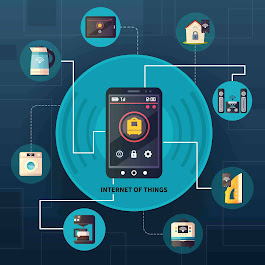Internet of Things (IoT) and Smart Homes
Internet of Things (IoT) and Smart Homes: Revolutionizing the Way We Live
The Internet of Things (IoT) has been transforming the way we live, work, and communicate for the past few years. With the integration of IoT technology, smart homes have emerged as one of the most exciting and rapidly growing trends in the world of technology. A smart home is a home equipped with a network of devices that can be controlled and monitored remotely through a smartphone, tablet, or computer. In this blog, we will explore the concept of IoT and smart homes in detail and how they are changing the way we live.What is IoT ?
The Internet of Things (IoT) refers to the interconnectivity of physical devices, vehicles, buildings, and other items embedded with electronics, software, sensors, and network connectivity, allowing them to collect and exchange data. IoT technology allows devices to communicate with each other and exchange data, providing users with real-time information and control over their devices.
For example, a smart home might have a network of IoT devices, including smart locks, thermostats, lights, and security cameras. All of these devices can be controlled through a single app on a smartphone, giving the homeowner complete control over their home from anywhere in the world.
How Does IoT Work?
Sensors and Devices: IoT devices contain sensors that collect data on various aspects of the device or its environment, such as temperature, light, sound, or motion. This data is then transmitted to other devices or to the cloud for analysis.
Connectivity: IoT devices must be able to connect to the internet in order to exchange data and be controlled remotely. This can be achieved through Wi-Fi, cellular networks, or other wireless communication technologies.
Data Collection and Analysis: IoT devices collect and transmit data to the cloud, where it can be analyzed and used to gain insights or control the device. This can be done through a centralized platform or through a distributed network of devices.
Control and Automation: Once the data is analyzed, IoT devices can be controlled and automated to perform certain actions. For example, a smart thermostat can automatically adjust the temperature based on the data collected from sensors in the home.
Interconnectivity: One of the key features of IoT is the ability of devices to communicate and exchange data with each other. This allows for the creation of complex networks of devices that can work together to perform specific tasks, such as automating a smart home.
What are Smart Homes?
Smart homes are homes equipped with a network of IoT devices that can be controlled and monitored remotely through a smartphone, tablet, or computer. These devices can communicate with each other and with the homeowner, providing real-time information and control over the home.
How Do Smart Homes Work?
Smart homes typically include a central hub, often a smart speaker such as Amazon Echo or Google Home, that serves as the control center for all of the other devices in the home. This central hub can be used to control lights, locks, thermostats, and security systems, as well as access information such as weather, news, and more.
Benefits of IoT and Smart Homes
Increased Convenience: With IoT and smart homes, homeowners can control their homes from anywhere in the world, giving them complete control and convenience.
Improved Energy Efficiency: Smart homes use sensors and algorithms to monitor energy use and adjust it in real-time, helping homeowners save on their energy bills.
Enhanced Security: Smart homes are equipped with security features such as smart locks, motion sensors, and security cameras that can be monitored remotely, providing increased security for homeowners.
Improved Home Management: IoT and smart homes allow homeowners to monitor and control all aspects of their home from a single app, making home management much easier and more efficient.
Increased Comfort: Smart homes use sensors and algorithms to adjust the temperature, lighting, and other aspects of the home in real-time, providing increased comfort for homeowners.
Conclusion
IoT and smart homes are transforming the way we live, work, and communicate, providing increased convenience, efficiency, security, and comfort. As the technology continues to evolve and become more integrated into our daily lives, we can expect to see even more exciting developments and advancements in the world of IoT and smart homes. Whether you're looking to upgrade your home or simply stay on top of the latest trends in technology, IoT and smart homes are definitely worth exploring.








Comments
Post a Comment